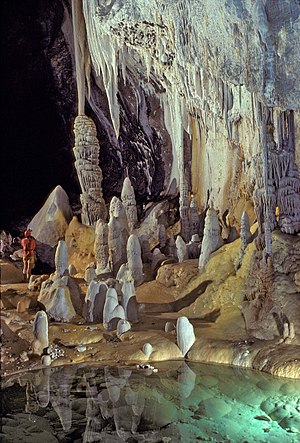
วันพฤหัสบดีที่ 11 กุมภาพันธ์ พ.ศ. 2559
Space
Space is the boundless three-dimensional extent in which objects and events have relative position and direction.[1] Physical space is often conceived in three linear dimensions, although modern physicists usually consider it, with time, to be part of a boundless four-dimensionalcontinuum known as spacetime. The concept of space is considered to be of fundamental importance to an understanding of the physicaluniverse. However, disagreement continues between philosophers over whether it is itself an entity, a relationship between entities, or part of a conceptual framework. อ่านเพิ่มเติม


Paper
Paper is a thin material produced by pressing together moist fibres of cellulose pulp derived from wood, rags or grasses, and drying them into flexible sheets. It is a versatile material with many uses, including writing, printing, packaging, cleaning, and a number of industrial and construction processes. อ่านเพิ่มเติม


Deserts
Deserts cover about one fifth of the Earth’s surface and occur where rainfall is less than 50 cm/year. Although most deserts, such as the Sahara of North Africa and the deserts of the southwestern U.S., Mexico, and Australia, occur at low latitudes, another kind of desert, cold deserts, อ่านเพิ่มเติม


Cave
For other uses, see Cave (disambiguation).

"Cavern" redirects here. For other uses, see Cavern (disambiguation).
A cave or cavern is a hollow place in the ground,[1][2] especially a natural underground space large enough for a human to enter. Caves form naturally by the weathering of rock and often extend deep underground. The word cave can also refer to much smaller openings such as sea caves, rock shelters, and grottos. อ่านเพิ่มเติม
สมัครสมาชิก:
ความคิดเห็น (Atom)
